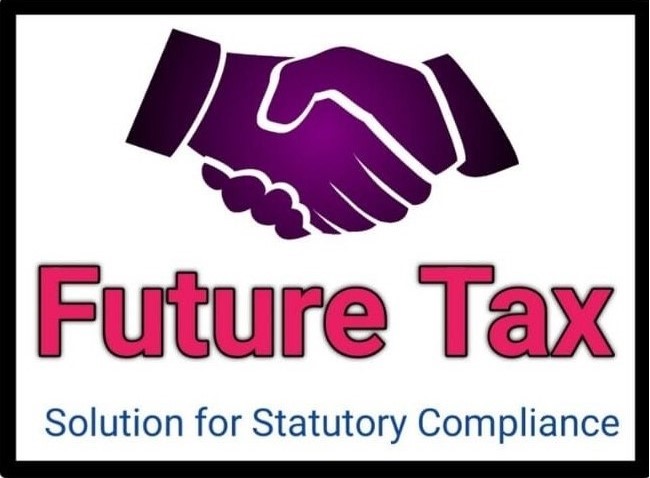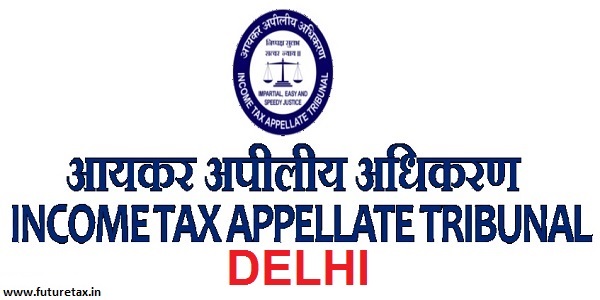
Aggregation vs. Segregation Approach in Benchmarking International Transactions in Tamil
- Tamil Tax upate News
- September 25, 2024
- No Comment
- 71
- 17 minutes read
Summary: In the case of BorgWarner Emissions Systems India (P.) Ltd., the key issue was whether the Transfer Pricing Officer (TPO) was justified in determining the arm’s length price (ALP) for technical support services (TSS), business support services (BSS), and royalty payments as nil. BorgWarner had claimed these services from its associated enterprises (AEs) and sought to aggregate the transactions for benchmarking. The TPO, however, adopted a segregative approach, asserting that the company failed to prove the actual rendering of services. This resulted in adjustments to the ALP of the transactions. BorgWarner appealed, arguing that the services were intertwined and necessary for business operations. The Income Tax Appellate Tribunal (ITAT) found that BorgWarner had provided sufficient evidence of the services and remanded the case back to the TPO. The Tribunal held that the TPO should reconsider the ALP determination using the aggregation approach and factor in landed costs for comparables in royalty payments. This ruling overturned the Dispute Resolution Panel’s support of the TPO’s findings, sending the case for fresh consideration.
The case involves Borgwarner Emissions Systems India (P.) Ltd., the Assessee company, which is engaged in manufacturing and marketing of Exhaust Gas Recirculation (EGR) systems and its components for the automotive industry. The Assessee claimed to have availed Technical Support Services (TSS) and Business Support Services (BSS) from its Associated Enterprises (AEs) and also paid royalty to its AE for use of technology, patents, know-how and trademarks.
Procedural History
The Transfer Pricing Officer (TPO) adopted a segregative approach (transaction by transaction approach) for benchmarking the international transactions of the Assessee on the ground that the Assessee had failed to prove the rendering of services. The TPO held that the arm’s length price of the BSS and TSS services was Nil, and accordingly made upward adjustments. The Dispute Resolution Panel (DRP) upheld the TPO’s order. Aggrieved, the Assessee appealed before the Income Tax Appellate Tribunal (ITAT).
Factual Background
The Assessee claimed that it availed TSS and BSS from its AEs, BWES Spain and BWES USA, which were necessary for the proper functioning of its day-to-day business operations. The Assessee also paid royalty to its AE for the use of technology, patents, know-how and trademarks. The TPO observed that the Assessee had failed to furnish credible evidence about requisitioning the BSS or actually obtaining the same. The TPO also noted that the Assessee failed to prove that it required additional know-how/training to run its business and paid an additional amount as TSS fee, as the Assessee already had the right to receive know-how and technical training as part of the license agreement with its AE, for which it paid royalty.
The Assessee contended that the TSS, BSS and royalty transactions were closely linked and intertwined, and therefore, the aggregation approach (combined approach) should have been adopted for benchmarking the international transactions. The Assessee also provided copies of emails, invoices and agreements to substantiate the rendering of services by the AEs. The key legal issues that arose were whether the TPO was justified in adopting the segregative approach for benchmarking the international transactions, and whether the transactions were required to be benchmarked using the aggregation or segregation approach.
Issues:
- Whether the Assessee-company actually availed of TSS, and BSS from its AEs, as claimed, or whether the TPO was justified in determining the arm’s length price (ALP) of these services as Nil.
- Whether the transactions of TSS, BSS, and royalty payment should be benchmarked using an aggregation approach (combined approach) or a segregation approach (transaction-by-transaction approach).
- Whether the TPO was justified in determining the ALP of the royalty payment without considering the landed cost of imported components in the case of the comparables.
- Whether the TPO and the DRP followed the principle of consistency by deviating from the approach adopted in the previous assessment years without providing adequate reasons.
- Whether the TPO and DRP adequately considered the evidence and arguments presented by the Assessee regarding the rendition of TSS and BSS.
Arguments:
- Appellant
- The Assessee claimed to have availed TSS and BSS from its AEs and established actual rendering of these services as per the agreements. The services availed were necessary for the proper functioning of the Assessee’s day-to-day business operations and were beneficial to the Assessee.
- The Assessee contended that all the transactions (TSS, BSS, and Royalty) were closely linked to each other or intertwined, and as such, the aggregation approach (combined approach) should have been adopted and accepted by the authorities, rather than the segregative approach (transaction by transaction approach) adopted by the TPO.
- The Assessee argued that when the TPO was unable to provide sufficient data of comparability as regards TSS and BSS, it was imperative to adopt the Aggregation approach by aggregating the transactions with the transactions pertaining to the purchase of raw material. The Assessee relied on the fact that the DRP accepted this contention.
- The Assessee contended that the agreements were arrived at between the Assessee and the AE BorgWarner Emission Systems Spain SL for the use of technology, patents, know-how, and trademarks, and as agreed, the Assessee pays royalty at the rate of 5% on net sales due to the sale of licensed products in India and at the rate of 8% of net sales outside India. The Assessee argued that the licensing agreements were entered into to save time and cost, which the Assessee would have been required to invest in the absence of the transfer of intangible items from the AE.
- The Assessee contended that for the manufacture of new products developed by the group, the AEs provide technical information and know-how in the form of designs, processes, and bills of material, and the cost of registration and maintenance of the newly developed products and intangible items are incurred by the AEs and not by the Assessee.
- The Assessee argued that the TPO incorrectly computed the ALP of the royalty without taking into consideration the landed cost of imported components in the case of the comparables. The Assessee relied on the same argument made in the first round of litigation, which was accepted by the Tribunal.
- The Assessee contended that the TPO has passed orders ignoring the earlier orders pertaining to Assessment Years 2011-12 and 2012-13, where the TPO had accepted the aggregation approach adopted by the Assessee, and the principle of consistency has been violated in this matter.
2. Respondent
- The TPO observed that the Assessee had failed to furnish any credible evidence about requisitioning the BSS or actually obtaining the same. The TPO held that the Assessee had failed to prove rendering of actual service in the form of BSS.
- As regards the TSS, the TPO observed that the Assessee had the right to receive know-how and technical training as part of the license agreement with its AEs, for which it paid royalty, but the Assessee failed to prove that it required additional know-how/training to run its business and paid an additional amount as TSS fee.
- The TPO concluded that in the given facts of the case, when the buyer (the Assessee) was not getting any real service, it would not have paid anything if it was not controlled by the payee (the AEs).
- The TPO adopted the segregative approach (transaction by transaction approach) for benchmarking the international transactions of the Assessee on the ground that the Assessee had failed to prove the rendering of services.
- The Revenue argued that no TSS or BSS were actually received by the Assessee, and the authorities below had rightly rejected the Assessee’s claim for the reasons recorded in the respective orders.
- The Revenue contended that in view of the License Agreement already arrived at between the Assessee and its AEs, there was no need for the Assessee to enter into a fresh Engineering Agreement for the said services.
- The Revenue argued that the Assessee did not produce any invoice to prove that any of the said services was ever requested or rendered. As regards the emails filed by the assessee, the contention was that none of the emails pertained to any request for any such service.
- The Revenue submitted that the onus of establishing the rendering of services is to be discharged by the Assessee on a year-to-year basis, and in this case, the Assessee had failed to establish the rendering of services.
The key issues analyzed by the Tribunal are:
- Whether the Assessee-company actually availed TSS and BSS from its AEs and whether the ALP of these services was determined correctly.
- Whether the transactions for TSS, BSS and royalty payments should be benchmarked using an aggregation approach or a segregation approach.
- Whether the ALP of the royalty payments was determined correctly.
Analysis on Issue 1 – TSS and BSS services:
- The TPO had rejected the Assessee’s claim for TSS and BSS services on the grounds that the Assessee failed to provide credible evidence of actually receiving these services. The TPO held the ALP of these services to be nil.
- The court noted that the Assessee had provided copies of emails, invoices, and agreements to demonstrate the actual rendering of TSS and BSS services by the AEs. The court found that the DRP had not adequately discussed or given reasons for rejecting this evidence provided by the Assessee.
- The court observed that the Assessee had established the actual rendering of services as per the agreements, and that these services were necessary for the proper functioning of the Assessee’s day-to-day business operations and were beneficial to the Assessee.
- Therefore, the court held that the TPO was not justified in concluding that the Assessee was not getting any real service and would not have paid anything if it was not controlled by the payee. The court held that the TPO erred in determining the ALP of the TSS and BSS services to be nil.
- The court remanded the issue back to the TPO to re-determine the ALP of the TSS and BSS international transactions, directing the Assessee to provide relevant details and evidence regarding the rendition of these services.
Analysis on Issue 2 – Aggregation vs Segregation approach:
- The TPO had adopted a segregation (transaction-by-transaction) approach to benchmark the international transactions for TSS, BSS and royalty, on the grounds that the Assessee failed to prove these transactions were so interlinked that they could not be benchmarked separately.
- The Assessee argued that these transactions were closely linked and intertwined, and therefore an aggregation approach should have been adopted.
- The court noted that the TPO had not provided any justification for deviating from the aggregation approach that had been accepted in the Assessee’s prior assessment years.
- The court observed that since the Assessee had established the actual rendering of the TSS and BSS services, these transactions were necessary and beneficial for the Assessee’s business operations.
- Therefore, the court held that the TPO was not justified in adopting the segregation approach and the matter was to be remanded back to the TPO to determine the ALP using an aggregation approach.
Analysis on Issue 3 – ALP of royalty payments:
- The court noted that in the previous round of litigation, the Tribunal had observed certain infirmities in the TPO’s determination of the ALP of the royalty payments, including the TPO’s failure to consider the landed cost of imported components in the case of the comparables used.
- The court found that in the current proceedings, the record did not indicate that the landed cost of imported components was considered by the TPO in determining the ALP of the royalty.
- Therefore, the court held that the TPO’s determination of the ALP of the royalty payments was not justified, and there was merit in the Assessee’s contention on this issue.
In conclusion, the court set aside the impugned assessment order and remanded the matter back to the TPO for re-determination of the ALP of the TSS, BSS and royalty transactions in accordance with the court’s analysis and directions.
The key points from the Tribunal’s order are:
1. The Tribunal held that the TPO was not justified in adopting a segregative approach for benchmarking the international transactions of the Assessee for TSS and BSS. The matter was remanded back to the TPO to determine the ALP of these international transactions.
2. The Tribunal found that the Assessee had established the actual rendering of TSS and BSS services as per the agreements, and that these services were necessary for the proper functioning of the Assessee’s day-to-day business operations.
3. Regarding the royalty payment, the Tribunal held that the TPO had not properly considered the landed cost of imported components in the case of the comparables used to determine the ALP of the royalty. The matter was therefore remanded back to the TPO to re-determine the ALP of the royalty payment. In summary, the Tribunal set aside the impugned assessment order and remanded the matters relating to the determination of ALP for TSS, BSS, and royalty payments back to the TPO for fresh consideration in accordance with the directions provided in the judgment.
Cases Referred in the Tribunal’s Order
1. Goodyear India Ltd. v. Dy. CIT [2016] 70 taxmann.com 67 (Delhi – Trib.) – Cited to support the Assessee’s contention on the aggregation approach for benchmarking international transactions.
2. CIT v. Cushman and Wakefield (India) (P.) Ltd. [2014] 46 taxmann.com 317/367 ITR 730 (Delhi) – Cited to support the Assessee’s contention on the aggregation approach for benchmarking international transactions.
3. Magneti Marelli Powertrain India (P) Ltd. v. DCIT – Cited to support the Assessee’s contention on the aggregation approach for benchmarking international transactions.
4. LG Electronics India (P.) Ltd. v. Asstt. CIT [2014] 52 taxmann.com 240/[2015] 153 ITD 591 (Delhi – Trib.) – Cited by the Revenue to support the segregation approach for benchmarking international transactions.
5. Akzo Nobel India Ltd. v. Addl. CIT [2022] 137 taxmann.com 369 (Delhi – Trib.) – Cited by the Revenue to support the principle that the onus is on the Assessee to prove the receipt of services in each assessment year.
6. AT Kearney Ltd. v. DCIT – Cited by the Revenue to support the principle that the onus is on the Assessee to prove the receipt of services in each assessment year.
7. MAN Diesel & Turbo India (P.) Ltd. v. Asstt. CIT [2019] 112 taxmann.com 155 (Pune – Trib.) – Cited by the Revenue to support the segregation approach for benchmarking international transactions.
8. Garware Polyester Ltd. v. Asstt. CIT [2013] 33 taxmann.com 164/[2014] 143 ITD 87 (Mumbai) – Cited to support the application of the TNMM method in the absence of comparable uncontrolled instances.
9. TNS India (P.) Ltd. v. Asstt. CIT [2014] 48 taxmann.com 128/[2015] 152 ITD 123 (Hyderabad – Trib.) – Cited to support the application of the TNMM method in the absence of comparable uncontrolled instances.
10. L.G. Electronics India (P) Ltd. v. ACIT (2014) 52 taxmann.com 240 (Delhi) – Cited by the Revenue to support the segregation approach for benchmarking the royalty transaction.
11. CIT v. EKL Appliances Ltd. [2012] 24 taxmann.com 199/209 Taxman 200/345 ITR 241 (Delhi) – Cited by the Assessee to support the contention that the Revenue authorities are not empowered to question the commercial wisdom of the Assessee.
12. Radhasoami Satsang v. CIT [1992] 60 Taxman 248/193 ITR 321 (SC) – Cited by the Assessee to support the principle of consistency.
13. Akzo Nobel India (P.) Ltd. v. Addl. CIT [2022] 145 taxmann.com 468/[2024] 460 ITR 477 (Delhi) – Cited by the Revenue to support the principle that each year is a separate unit and governed by its peculiar facts.
14. Cochin Silicate & Glass Industry v. CCE 1989 taxmann.com 77 (CEGAT- NEW DELHI) – Cited by the Revenue to support the principle that the onus is on the Assessee to prove the receipt of services in each assessment year.
15. Sony Ericsson Mobile Communications India (P.) Ltd. v. CIT [2015] 55 taxmann.com 240/231 Taxman 113/374 ITR 118 (Delhi) – Cited to support the Assessee’s contention on the aggregation approach for benchmarking international transactions.




